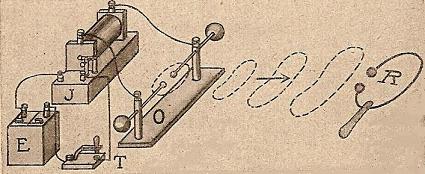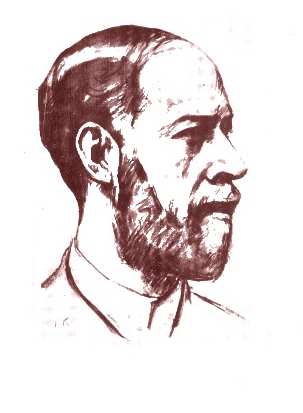1886/87
In the following weeks he made extensive experiments on this matter. With his circuits he produced electro magnetic waves on a broad band of frequencies (some authors mentioned a wavelength of 7.5 m !). At his laboratorium he examines the waves with the resonator and finds maxs and mins of the waves amplitudes by looking at the spark with a magnifying glass. He quatified the strength of the spark and concluded to have produced a very high frequency.
Hertz published his findings. Other physicists repeated the experiments and confirmed his
findings. Asked upon the usefullness of his finding Hertz stated:

The Hertz experiment:
E = Energiequelle (Batterie), T = Taster, J = Induktionsspule, O = Wellensender (Oszillator)
R = Resonator.
When a spark occurres, then electromagnetic waves where produced at the wavetransmitter O and are recognizable at some meters apart. Tiny sparks were recognazied at the resonator R. (Source(1): Dr. F. Fuchs, Der praktische Radionamateur, 1924, Stuttgart, Franksche Verlagshandlung)
Hertz did not worked any longer on this field of physics.
Nobody took any serious care on electromagnetic waves for about 10 years

(Source: Heinrich Hertz,
1957, H.Hertz Schule)